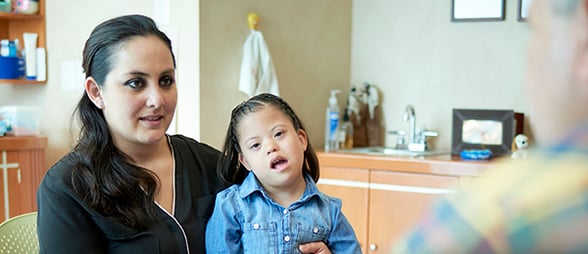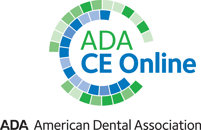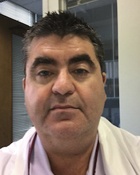Better brushing habits for kids? There’s an app for that
A new smartphone application offers “enormous possibilities” for medium-term oral hygiene improvement in preschool-aged children, according to a study published in the November 2019 issue of Caries Research. Authors designed the prospective, controlled, single-blind study to measure the motivating effectiveness of a manual toothbrush supplied with a gravity sensor and a mobile toothbrushing app in 5- to 6-year-old children. The authors randomly assigned 49 children (27 girls, 22 boys; mean age, 5.1 +/- 0.6 years) into test (26) and control (23) groups for a 12-week observation period. Authors recorded plaque index according to the Quigley-Hein Index and papillary bleeding index (PBI) at baseline and at 6- and 12-week recall appointments for test and control groups.
All children received a manual toothbrush with a digital motion sensor in the handle. Children in the test group also received a smartphone app to record and reward their brushing movements in real time. The toothbrush detected the child’s brushing habits and compared them in real time with optimal brushing movements via the mobile app. The app saved data from each brushing session and added up to 36 bonus points when children replicated optimal brushing movements. Children in the control group received the same toothbrush but not the smartphone app.
The oral hygiene behavior questionnaire showed that 96% of children used fluoride toothpaste. Before the study, about one-half of children reported they used manual toothbrushes, nearly 35% used electric toothbrushes, and about 10% alternated between manual and electric. Nearly 41% reported they replaced their toothbrush every 4 weeks, nearly 25% replaced it every 2 months, nearly 25% replaced it every 3 months, and 6.1% used their toothbrushes for more than 3 months.
For brushing frequency and duration, 2% of children reported they brushed once per day, 79.6% brushed twice per day, and 18.4% brushed 3 times per day. Roughly one-half reported they brushed their teeth for 2 minutes, 14.3% said they brushed for 1 minute, 10.2% said they brushed for 3 minutes, and 18.4% said they brushed for more than 3 minutes. Nearly 41% reported the use of dental floss, mouthrinse, or both.
In the test group, initial scores ranging from 3 through 15 points spiked to more than 30 points within 2 weeks. Although all test group participants needed at least a week of training to keep the number of bonus points was stable; 87% earned the maximum 36 bonus points after 2 weeks.
Authors used the Friedman test for intragroup analysis and Mann-Whitney U tests to measure differences between the 2 groups. Initial mean values for Quigley-Hein Index were nearly identical for both groups (test group, 2.36 +/- 0.74; control group, 2.42 +/- 0.77; P = .94). Authors found a statistically significant difference in GHI scores at 6 weeks (test group, 0.58 +/- 0.48; control group, 1.88 +/- 0.88; P < .001) and again at 12 weeks (test group, 0.44 +/- 0.48; control group, 1.49 +/- 0.73; P < .001).
Initial PBI values for both groups were comparable (test group, 0.42 +/- 0.21; control group, 0.47 +/- 0.28; P = .59). Mean PBI values dropped for both groups at 6 weeks, although authors noted a much lower PBI in the test group than in the control group (0.08 +/- 0.13, 0.26 +/- 0.00, respectively, P < .001). Mean PBI scores at 12 weeks rose slightly in both groups than at 6 weeks with statistically significant differences.
Read the article here or contact the ADA Library & Archives for assistance.

Tricalcium silicate or formocresol for pulpotomies?
The use of tricalcium silicate is a suitable substitute for formocresol in primary molar pulpotomies, according to a study published in the November/December 2019 issue of Pediatric Dentistry. Tricalcium silicate showed a higher—though not statistically significant—success rate than formocresol.
Authors designed the randomized clinical controlled trial to compare the long-term success of pulpotomies in primary molars treated with tricalcium silicate and formocresol. The authors considered treated teeth a success if they showed no internal or external root resorption, and no further treatment was necessary.
Authors performed pulpotomies on primary molars in 58 children (31 boys and 27 girls) as part of regular dental treatment. The authors treated 37 teeth with tricalcium silicate (experimental group) and 35 teeth with formocresol (control group). The children’s ages ranged from 2.58 years through 9.58 years at the time of treatment, with a mean (standard deviation [SD]) age of 6.2 (1.54) years (median, 5.83 years) in the tricalcium silicate group and 5.9 (1.66) years (median, 5.25 years) in the formocresol group.
Authors removed the coronal pulp with a round bur and achieved hemostasis. They then treated the pulp dressing randomly with either tricalcium silicate or formocresol according to the manufacturers’ instructions. For the experimental group, authors applied Biodentine (Septodont) into the prepared cavity, then covered the tricalcium silicate paste with a reinforced zinc oxide-eugenol cement after condensation. For the control group, authors applied a cotton pellet lightly moistened with full-strength formocresol for 5 minutes on the amputated pulp, then covered the pulp stumps with immediate restorative material. All pulp treatments were completed in 1 visit. Stainless steel crowns on teeth treated with a pulpotomy were placed at the same appointment.
Authors considered treatment a failure if they detected internal or pathological external root resorption, furcation radiolucency or widened periodontal ligament, or if subsequent pulpectomy or extraction was performed. Authors also considered internal resorption a failure because it showed that treatment failed to achieve a non-pathological state of pulpal tissue.
The primary mandibular left first molar was the most commonly treated tooth. The primary maxillary right second molar was the least commonly treated tooth. Mandibular molars comprised 63.9% of teeth treated with pulpotomy, while 56.9% were on the left side of the mouth (56.9%).
Authors found that tricalcium silicate was successful in 97.3% of cases and formocresol was successful in 91.4% of cases. Fisher exact test found no statistically significant differences between the 2 treatments (P = .350). However, authors found a statistically significant difference in failure rates by sex. All 4 failures were found in girls’ teeth. Of those, the authors attributed 3 failures to formocresol and 1 to tricalcium silicate.
Authors found no association between success or failure and tooth type (P = .920, Fisher exact test) and no significant difference between success and failure and time range from treatment to last follow-up of up to 48 months.
“Tricalcium silicate has been found to be a suitable dentin substitute,” the authors concluded, “sharing the same indications and mode of action as calcium hydroxide and [mineral trioxide aggregate], without their drawbacks.”
Read the article here or contact the ADA Library & Archives for assistance.

Permanent tooth caries experience predicted using new risk models
Two models used to predict future caries in permanent teeth could change the way dentists assess caries risk, according to a study published in the November/December issue of Pediatric Dentistry.
Authors designed the models to predict the presence of decayed, missing, and filled tooth surfaces (DMFS) and untreated primary tooth caries among African-American children aged 6 through 12 years. Authors based their models on data from a prospective study of 98 African-American children conducted at the University of Alabama at Birmingham. Three dentists conducted oral examinations at baseline (about 6 years) and 6 yearly follow-up examinations (ages 7-12 years).
The first model they used to predict future caries incidence in permanent teeth (Δ [DMFS]) used DMFS experience in primary teeth in 6-year-olds as a predictor. Researchers assigned children to 1 of 4 groups. Group 1: true positive (TP), in which children received a DMFS score above zero at age 6 years and a Δ DMFS score above zero at follow-up; group 2: false positive (FP), in which children received a DMFS score above zero at age 6 years and a Δ DMFS score of zero at follow-up; group 3: false negative (FN), in which children received a DMFS score of zero at age 6 years and a Δ DMFS score above zero at follow-up; and group 4: true negative (TN), in which children received a DMFS score of zero at age 6 years and a Δ DMFS score of zero at follow-up. The second model the authors used to predict Δ DMFS used untreated dental caries in primary teeth (DS) at age 6 years as a predictor. The authors assigned children to the same groups as the first model.
Authors assessed the risk of developing dental caries in primary teeth using 5 criteria: sensitivity (SN), the probability that DMFS was above zero when Δ DMFS was above zero; specificity (SP), the probability that DMFS equaled zero when Δ DMFS equaled zero; positive predictive value (PPV), the probability that Δ DMFS was above zero when DMFS was above zero; negative predictive value (NPV), the probability that Δ DMFS equaled zero when DMFS equaled zero; and percentage agreement, the probability that Δ DMFS was above zero when DMFS was above zero and Δ DMFS equaled zero when DMFS equaled zero.
In the first model, SN ranged from 81.8% through 100%, SP ranged from 35.6% through 42.6%, PPV ranged from 5.8% through 38.1%, NPV ranged from 90% through 100%, and percentage agreement ranged from 38.5% through 56.5%. For the second model, SN ranged from 33.3% through 55.6%, SP ranged from 62.7% through 72.7%, PPV ranged from 3.4% through 45.5%, NPV ranged from 80% through 95.9%, and percentage agreement ranged from 60.6% through 67.7%.
“These two models are easy, applicable, and not time-consuming,” the authors concluded. “If these two models were validated in other samples and populations, they could have the potential to change the current paradigm for caries risk assessment and caries prediction models.”
Read the article here or contact the ADA Library & Archives for assistance.

Caregiver supervision needed to reduce accidental injury after local anesthesia in kids with intellectual disabilities
Caregivers should closely supervise children with intellectual disabilities to prevent them from biting their lips, cheeks, and tongues after they receive anesthetic. The findings are from a study published online January 2 in the European Archives of Paediatric Dentistry.
Authors designed the study to measure the frequency of self-induced soft-tissue injuries (SSI) after dental anesthesia in children with and without intellectual disabilities. The study sample included 241 children who received 464 dental injections. Authors divided the participants into 2 groups: group A, children without intellectual disabilities (159 children, 299 injections), and group B, children with intellectual disabilities (82 children, 165 injections). Children in group B had Down syndrome (46) or fetal alcohol syndrome, Noonan syndrome, congenital brain defects, infections during pregnancy or infancy, or were born preterm (36).
Authors divided each group into smaller groups by age (6 years or younger, older than 6 years), injection technique (maxillary infiltration, mandibular infiltration, inferior alveolar nerve block [IANB]), and dental treatment (restorative or endodontic treatment, extraction). Children were unaware of the injection procedure and never saw the syringe or needle. After the procedure, dentists gave caregivers 3 pictures of SSI in the tongue, upper lip, and lower lip and described clinical features to help them identify SSI in their children at home. Authors conducted a phone survey 2 days after the dental procedure to verify the presence of SSI.
Authors used the χ2 test to note the presence or absence of statistically significant differences between sexes, groups A and B, and subgroups. They used a mixed-effects model to account for more than 1 injection per child. Authors considered group, injection technique, and dental treatment to be fixed effects and age and sex as random effects.
The overall frequency of SSI in group B was 19% with no significant difference between sexes (P = .738). Authors found the frequency of SSI was 24% in the 6 years and younger group and 16% in the older than 6 years group with no statistically significant differences between the subgroups (P = .228). The highest frequency of SSI based on injection technique was 35% from IANB, followed by 19% from infiltration anesthesia in the mandible and 9% in the maxilla with a statistically significant difference among subgroups (P < .001; χ2 test). The highest frequency of SSI based on dental treatment was 18% from restorative or endodontic treatment, 28% from extractions, and 15% from both therapies.
Children in group A had a 9% incidence of SSI with no significant difference between sexes (P = .601). The frequency of SSI in the 6 years and younger group was 15%, and it was 4% in the 6 years and older group with a statistically significant difference (P = .002). The highest frequency of SSI according to injection technique was 15% from IANB and 13% from mandibular infiltration. The highest frequency of SSI according to dental treatment was 12% from restorative or endodontic treatment and 2% from extractions. Authors found a statistically significant difference in the frequency of SSI between groups A and B.
Read the article here or contact the ADA Library & Archives for assistance.
Advantage Arrest is the first silver diamine fluoride available in USA
Advantage Arrest is the first and only American-made silver diamine fluoride, a must-have for every dental office. Advantage Arrest is the only tinted SDF formula, enhancing placement visualization, and is available in an economical 8 mL bottle and unit-dose packaging for enhanced asepsis. Advantage Arrest is an immediate desensitizer (D9910), a discloser of incipient lesions (D1354) and a proven caries preventive agent (D1208). Elevate Oral Care has also launched SMART Advantage, a self-cured glass ionomer designed to mask SDF-treated surfaces. To purchase Advantage Arrest or SMART Advantage directly, and/or schedule an informative staff meeting today, click here.
 Learn to help your younger patients with airway problems
Learn to help your younger patients with airway problems
When a child has breathing problems, orthodontics is not usually the first thought when it comes to treatment. However, in these two courses by the experts at the ADA, you will learn how this field can help younger patients with issues such as snoring and obstructive sleep apnea. The courses offer ideas for tests and treatment options. You will discover your role in a child’s overall health beyond their dental concerns.
- Orthodontics with an Airway Focus
- 2019 ADA Children's Airway Conference Session Five:
Nasal Breathing 24/7: What Does That Even Mean?
Habit Correcting for Children and Dental Teams: Growth and Development
Visit ADACEOnline.org to start these and other orthodontics courses. Use promo code CESCAN2020 to take 10% off individual courses or a one-year, full access subscription.
 AAPD 2020 is set for May 21-24 in Nashville, Tennessee
AAPD 2020 is set for May 21-24 in Nashville, Tennessee
AAPD 2020 will be here before you know it and it’s an experience you won’t want to miss. From world-class continuing education presented by leaders in pediatric dentistry to exciting and engaging social events, you will want to reserve your seat. Visit annual.aapd.org for more details and to register and click here for a video overview.

The consulting editor for JADA+ Specialty Scan — Pediatric Dentistry is James R. Boynton, DDS, MS, Clinical Associate Professor, Pediatric Dentistry Division Head, University of Michigan School of Dentistry. |

The consulting editor for JADA+ Specialty Scan — Pediatric Dentistry is Douglas B. Keck, DMD, MSHEd, Dental Director, Healthcare Network of Southwest Florida. |
|





